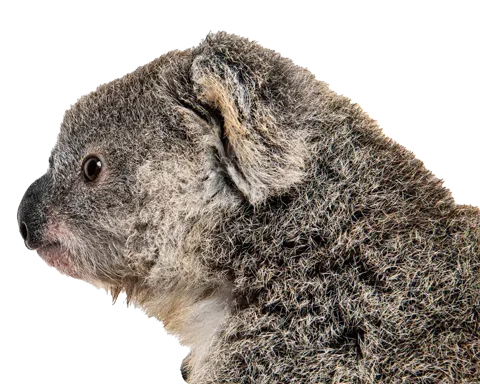
For Rainbow Lorikeets and other honeyeaters -
These birds feed mainly on nectar from flowers. This food source is quite complex and is supplemented with protein from pollen and insects. The digestion system of these birds cannot cope with processed sugar, seed, bread etc except in very small quantities. Do NOT feed honey or sugar mixes to these birds as it reduces their desire to seek out nectar from flowers. They become undernourished and more susceptible to disease. Vitamin deficiency can cause foot and leg paralysis and poor feather growth. In summer these artificial mixtures deteriorate very quickly and become an ideal source for spreading bacterial infections amongst birds using communal feeding dishes. Previously, in winter, lorikeets dispersed in search of blossoms, but as a result of artificial feeding, many are staying in the colder climates and breeding throughout the winter. Winter babies have great difficulty surviving the cold. Other problems of artificial feeding are overpopulation and competition for limited nesting sites, which results in the crowding out of smaller and less aggressive species. Artificially fed birds may become dependent on humans and lose their fear of predators.

For seed-eating parrots – eg Rosellas, Sulphur Crested Cockatoos, Galahs
These parrots require a variety of seeds and plant material in their diet. The common practice of artificial feeding, and particularly the feeding of sunflower seed, has resulted in many of these birds suffering a nutritional imbalance. Imbalanced diets often result in poor bone and feather development which may severely impede the animal’s ability to fly and reduce its life expectancy. The spread of disease is magnified in artificially fed populations. This is due to the close contact between birds at the feeding site and the over-use of scarce nesting sites. Beak and Feather Disease is rampant in Sulphur Crested Cockatoos in the Sydney area. It is a highly contagious disease for which there is no known cure. Birds die a cruel death when most of their feathers drop out and their beaks grow too long to allow them to eat. Feeding parrots results in their over-familiarisation with humans and not all humans treat them kindly. There is also a heightened risk of negative interactions between birds and the general population. For example, parrots that appear to be tame may be approached by children who are unaware of how damaging their bite can be. Cockatoos and Corellas are regarded as pests in some areas of Sydney, although they are protected animals. Their playful behaviour often results in damage to property. Encouraging large flocks of these birds through artificial feeding exacerbates the problem.
For Kookaburras, Magpies, Currawongs and Butcher Birds -
These birds mostly eat meat, not beef or mince, but whole spiders, mice and cockroaches. Their diet is the whole animal, including fur, bones and organs rich in vitamins, minerals and fibre, all essential for healthy growth. Beef is a very poor source of calcium and many of the birds that come into care suffer from calcium deficiency. An over-abundance of these species causes a reduction in the small bird population on which they prey. This is why we now rarely see, for example, Blue Wrens and Finches in our gardens. Humans too often upset the balance of nature.
So in summary........
Please consider the birds’ welfare, as well as your own pleasure, by providing clean water, plenty of bushy, flowering native plants and a safe, cat-free environment and sit back and enjoy the birds. Remember it is unnecessary and cruel to feed our native birds.


